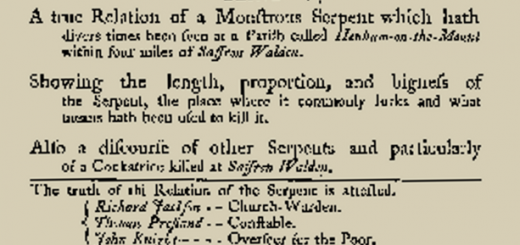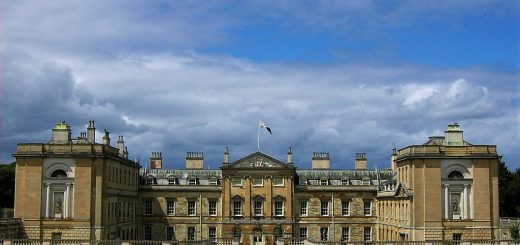The Rufus Stone
The Rufus stone (now encased in metal) erected by Earl De La Warr in 1745, marks the location where King William II of England (referred to as William Rufus due to his red faced complexion) died in a hunting accident on 2 August 1100. Some mystery still envelopes the events of his death.
William was a ruthless ruler and considered to be ‘hated by almost all his people’ according to the Anglo-Saxon Chronicle and who disliked England in return. On the day of his death he was hunting in the New Forest. Before setting out he was presented with six new arrows of high craftsmanship by an armourer with which he was very pleased. He kept four of the arrows and gave two to his friend Walter Tyrrel (Tirel), Lord of Poix, reputedly saying “It is only right that the sharpest be given to the man who knows how to shoot the deadliest shots”. This indicates that Tyrrel was an accomplished marksman.
 During the hunt William and Tyrell became separated from the rest of the hunting party. William died at the hands of Tyrell whilst they were in the woods, shot in the chest by one of the arrows the King had given to him. According to William of Malmesbury, Tyrell shot at a stag but the shot went wild, missed the target and hit the King. Rufus, a soldier would have known how serious the injury was. He reputedly snapped the arrow shaft protruding from his chest without saying a word, then fell forward onto wound, pushing what remained of the arrow deeper into him where it had already punctured a lung. Walter Tyrell was convinced that no-one would believe it was an accident and he fled.
During the hunt William and Tyrell became separated from the rest of the hunting party. William died at the hands of Tyrell whilst they were in the woods, shot in the chest by one of the arrows the King had given to him. According to William of Malmesbury, Tyrell shot at a stag but the shot went wild, missed the target and hit the King. Rufus, a soldier would have known how serious the injury was. He reputedly snapped the arrow shaft protruding from his chest without saying a word, then fell forward onto wound, pushing what remained of the arrow deeper into him where it had already punctured a lung. Walter Tyrell was convinced that no-one would believe it was an accident and he fled.
When William was found by the other nobles they left his body and returned home as fast as they could to secure their property and interests, as the King, an absolute monarch dying without being married or having children created an unstable political situation. William’s youngest brother Henry, who had been amongst the hunting party wasted no time in seizing the treasury at Winchester and having the barons proclaim him King, before his other brother Robert of Normandy, heir to the throne could do so.
It was left to a charcoal-burner called Purkis (Purkess, Purkiss) to carry the Williams body to Winchester on his old cart after he stumbled across the body. King William’s remains now lie in a mortuary chest, positioned above the choir section of Winchester Cathedral. The remains of King Canure and his wife also share this chest with him. Purkis was given a gift of land for his act and his family remained in the in that area for many centuries.
It has been said that a chronicler of Tyrell called Abbot Suger who knew him in whilst he was exiled in France claimed that Walter made a solemn oath that he was no where near the King on the day he was shot dead and never saw him in the forest.
Was it murder or was it an accident?
The Legends
It is said that William had received word of warning dream had by a monk concerning his death that day whilst out hunting, but he had ignored it.
Before hitting William, the arrow is supposed to have glanced of an Oak tree. This tree was then supposed to grow leaves each Christmas morning, only to shed them before midnight.
![David Hunt [Public domain], from Wikimedia Commons](http://www.mysteriousbritain.co.uk/wp/wp-content/uploads/2008/08/800px-Rufus_Stone-1-225x300.jpg) When Purkis was conveying the body to Winchester it left a crimson blood trail behind which flocks of mourners gathered around as the cart made its journey.
When Purkis was conveying the body to Winchester it left a crimson blood trail behind which flocks of mourners gathered around as the cart made its journey.
There are claims that the death was known about as far away as Devonshire on the day on which he was killed, which is unlikely unless it was pre-planned.
A ghostly funeral procession is sad to haunt the Rufus Stone and follow the route which his body was taken. But given he did have such a procession, I am unsure about this account.
William Rufus is said to haunt the New Forest. He was said to have been seen around Stoney Cross for many years after his death.
At Castle Malwood a pond was said to turn the colour of blood on the anniversary of his death.
It has been suggested that Rufus was killed as part of a Pagan ritual where he took the role of the ‘Sacrificial King’ or ‘Devine Victim’, sacrificed to the Sun God to ensure a good harvest. Even the timing of his would tie in with this theory, with Lughnasadh being August 1.
It has even been suggested that the birth of the conjoined twins known as the Biddenden Maids was considered an omen connected with the death of King William II by the general populace.




Forum Topic
The death of King William Rufus has been the topic of much debate, especially in our forum. If you have anything to add please join the discussion.